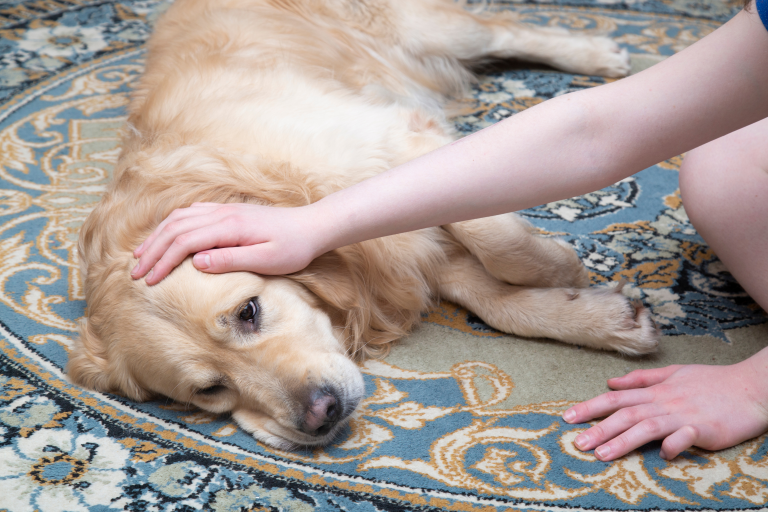Our pets are our babies, and we can usually tell when something is amiss. One of the most important responsibilities of being a pet owner is ensuring the well-being of your furry, feathered, or scaly friend. This includes recognizing when your pet is in pain, as animals often suffer in silence. In this article, we will explore several ways to tell if your pet is in pain so you can provide the care and support they need.
Changes in Behavior
One of the most telling signs that your pet might be in pain is a noticeable change in their behavior. Dogs, cats, and other animals have distinct personalities, and they tend to act in predictable ways. When they’re in pain, however, they may exhibit behaviors that are out of character. Some common changes in behavior to watch out for include:

- Increased aggression or irritability: Pain can make even the most docile pet become aggressive or snappy.
- Decreased activity: If your typically active pet suddenly becomes lethargic and uninterested in play or walks, they’re likely in pain.
- Hiding: Pets may seek solitude when they’re hurting. Cats often retreat to hidden spots, while dogs may find a quiet corner to curl up in.
- Changes in vocalization: Excessive whining, whimpering, or yowling can be a sign that your pet is hurting.
- Excessive grooming: Just as people may bite their nails when they’re nervous, cats may over-groom themselves when in pain, as a means of attempted comfort and/or distraction.
- Restlessness: Sick pets may exhibit anxious behaviors like pacing around and being unable to stay still.
If you notice behavioral changes in your pet like the ones listed above, consider what changes to their daily routine you will need to make while they’re sick – if your pet’s lethargic, you certainly don’t want to take them on a long hike.
Altered Eating and Drinking Habits
Pain can significantly affect your pet’s appetite and thirst. Keep an eye on their eating and drinking habits, as changes in these behaviors may signal pain or discomfort. Look for:
- Refusal to eat or drink: A pet in pain may turn away from their food and water bowls. You may notice weight loss if they refuse to eat for several days in a row.
- Excessive drinking: On the flip side, some pets might drink more water than usual as a response to their discomfort.
There are some medications like antacids that can be given to sick dogs that aren’t eating. Of course, check with your vet before administering any type of medicine.
Our pet sitters carry in their car cans of baby food for instances in which a dog is not eating. We find that just a couple small spoonsful of baby food work like magic for dogs with a poor appetite.
Changes in Posture and Movement

Pain often causes our furry friends to adopt unusual postures or move differently than they normally would. Pay attention to the following physical signs:
- Limping or favoring a specific limb: Pets in pain may avoid putting weight on a painful limb.
- Stiffness: Arthritis and other joint issues can cause stiffness, making it challenging for your pet to move freely.
- Shaking or trembling: Pain can lead to trembling or shaking, especially in our pups.
- Guarding: Your pet may attempt to protect the painful area by guarding it, which means they’ll resist any attempts to touch or examine that specific spot.
Take note of what parts of the body your pet seems to bother them and make accommodations, as suggested by PetMD. Some possible examples of this include:
- Raising your pet’s food or water bowl so your pet doesn’t have to bend their snout all the way down to the floor.
- Implementing ramps so your pet doesn’t have to climb up and down stairs.
- Carrying your pet or helping them to walk around the house.
Changes in Bathroom Habits
Pain can also affect your pet’s bathroom habits. Keep an extra eye out for:
- Straining or difficulty urinating or defecating: Painful conditions such as urinary tract infections or constipation can lead to straining.
- Frequent accidents: If your house-trained pet starts having accidents indoors, it could be due to pain affecting their ability to control themselves.
Respiratory Changes
Certain painful conditions, such as respiratory infections or lung problems, can cause changes in your pet’s breathing patterns. Be attentive to:
- Rapid or shallow breathing: This may indicate pain or distress. Rapid breathing is often accompanied by a rapid heart rate. GoodRX notes that these symptoms could indicate pancreatitis.
- Coughing or sneezing: Frequent coughing or sneezing could be a sign of respiratory discomfort.
Changes in Coat and Skin
Your pet’s coat and skin can also provide clues about their well-being. Examine them for:
- Dull, dry, or flaky coat: Pain and discomfort can affect grooming habits, leading to a lackluster coat.
- Hot spots or swelling: Swollen areas or hot spots on the skin can indicate pain or irritation.
- Excessive shedding: Stress and pain can sometimes trigger excessive shedding in pets.

As responsible pet owners, it’s our duty to ensure the physical and emotional well-being of our animal companions. Recognizing the signs of pain in your pet is crucial for their health and happiness. Remember that each pet is unique, and the severity of their pain can vary. If you suspect your pet is in pain, consult with your veterinarian right away. They can provide a thorough examination, diagnose the underlying issue, and recommend the best course of action to alleviate your pet’s suffering. By staying vigilant and proactive, you can ensure a higher quality of life for your beloved furry friend.











